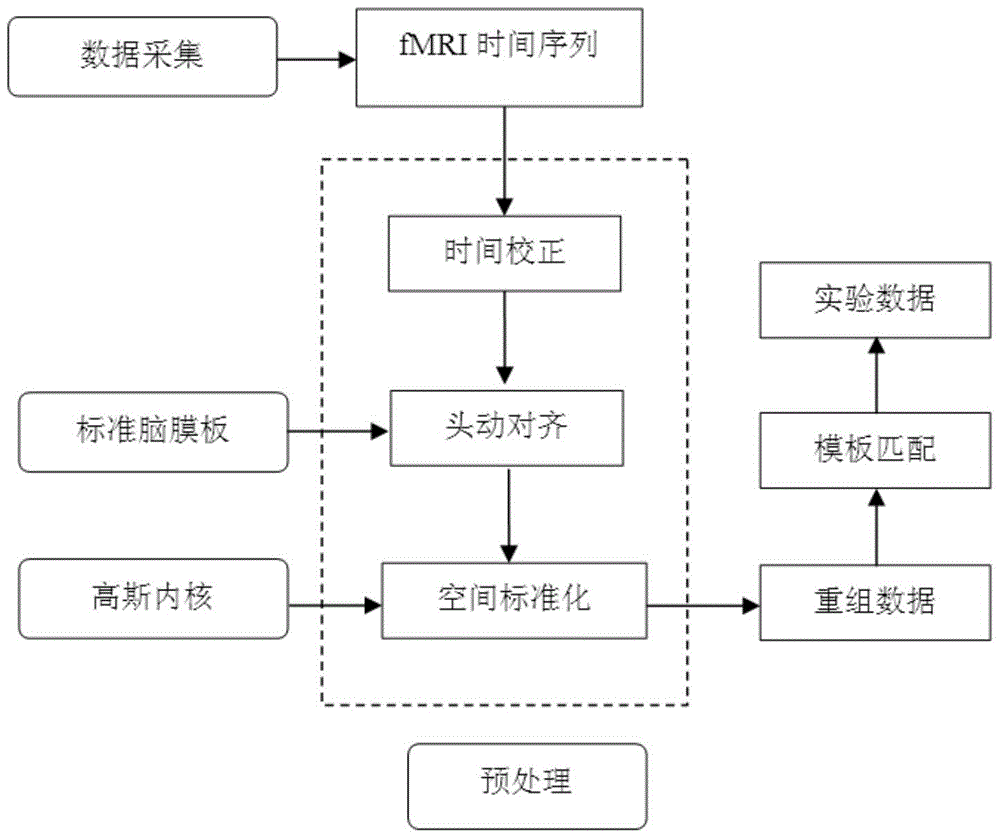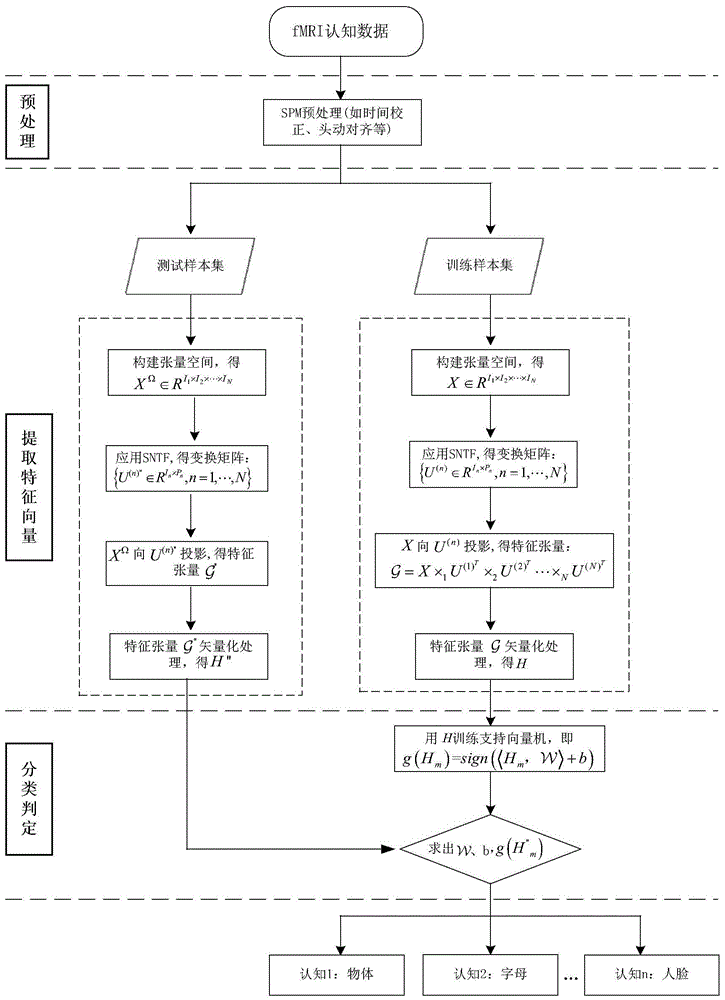Brain Specific Visual Cognitive State Judgment Method Based on Sparse Nonnegative Tensor Decomposition
A technology of non-negative tensor decomposition and state determination, which is applied to instruments, character and pattern recognition, computer components, etc., and can solve problems such as unsatisfactory effect of dimensionality reduction, limitation, destruction of original image structure and correlation, etc.
- Summary
- Abstract
- Description
- Claims
- Application Information
AI Technical Summary
Problems solved by technology
Method used
Image
Examples
Embodiment Construction
[0085] The specific flow of a complete brain-specific visual cognition judgment method based on sparse tensor decomposition is described in detail below in conjunction with the accompanying drawings.
[0086] 1. Reference figure 1 , the preprocessing part of the present invention includes: performing data preprocessing on the data collected after the magnetic resonance scan (based on SPM8), then recombining them with the experimental categories according to the time series, and finally matching with the standard template to obtain the experimental data. Gray matter, white matter, and cerebrospinal fluid. Specific steps are as follows:
[0087] Step 1: Perform time difference correction on the data collected by MRI. Time difference correction is to correct the difference in acquisition time between layers in a volume, so as to ensure that each layer is obtained from the same time.
[0088] Step 2: Since the duration of the brain functional imaging experiment is relatively lon...
PUM
 Login to View More
Login to View More Abstract
Description
Claims
Application Information
 Login to View More
Login to View More - R&D
- Intellectual Property
- Life Sciences
- Materials
- Tech Scout
- Unparalleled Data Quality
- Higher Quality Content
- 60% Fewer Hallucinations
Browse by: Latest US Patents, China's latest patents, Technical Efficacy Thesaurus, Application Domain, Technology Topic, Popular Technical Reports.
© 2025 PatSnap. All rights reserved.Legal|Privacy policy|Modern Slavery Act Transparency Statement|Sitemap|About US| Contact US: help@patsnap.com



